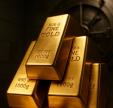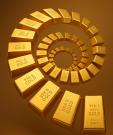Ranking The Factors That Affect The Future Price Of Gold
 Gold prices have traded very actively over the past 15 years, as precious metals once considered an alternative investment have now become more accepted by investors of all sizes. For most of these years, the price of gold increased, recording a high in October 2011 of over $1,900 per ounce. Since then, gold has decreased in value and currently stands at around $1,200 per ounce.
Gold prices have traded very actively over the past 15 years, as precious metals once considered an alternative investment have now become more accepted by investors of all sizes. For most of these years, the price of gold increased, recording a high in October 2011 of over $1,900 per ounce. Since then, gold has decreased in value and currently stands at around $1,200 per ounce.
Many of the factors that fueled the rise of gold have done an about face and have caused the yellow metal to fall. As an example, gold prices rose during the financial crises and QE years as short and long-term interest rates fell. Jump forward a few years, and interest rates continue to be at historic lows, if not lower than they were from 2008 – 2011, but now gold prices have fallen.
As all capital markets influence each other, finding the balance is key in maintaining a well-performing, well-balanced portfolio. Let us look at five factors – ranked in order of importance – that will impact gold’s price in the shorter and longer term:
1. Central Bank Policy (FOMC) and Currencies – While the current state of the U.S. and global economy can be debated, as economic data continues to be mixed, the policy as set forth by our decision makers in the U.S. is to begin nudging up interest rates this year. At the same time, the other major economies (Eurozone and China) appear to be faltering, and their policy makers are again engaged in economic stimulus programs. The debt crisis in Europe could be a game changer, but for now, the result is likely a strengthening of the USD in the short term, which will continue to be a negative factor for gold.
2. Inflation – Gold has always been viewed as a hedge against inflation. As history has shown us, economies and markets are cyclical. We are currently in a period of low inflation and weak growth. As this cycle begins to change, the price of oil and most components within the Thomson Reuters Commodities Research Bureau Index will begin to rise, and this should have a positive impact on gold prices.
3. China – As the massive Chinese economy continues to grow and individuals have greater access to Western culture and investments, it is expected that Chinese imports of gold will continue increasing in the years to come, which should be a positive for gold’s performance.
4. Geopolitical Events – We live in a world with many “hot spots,” where tensions run high. As we have seen many times in the past and will undoubtedly see in the future, these events highlight gold’s allure as a hedge against uncertainty and the volatility of paper currencies and other capital markets.
5. Central Bank Purchases – Central Bank decision makers have been purchasing gold steadily since 2010. If governments feel it necessary to diversify a bit from USD and EUD denominated assets, and it is expected this trend will continue for the foreseeable future, it could be a real positive for gold’s longer term upside potential.
To be sure gold volume will continue to grow in the years to come. However, gold prices may yet move lower this year. Nonetheless for those with a longer term investment perspective, gold’s upside potential far outweighs the downside risk.






 Roy Friedman serves as Executive Vice President for
Roy Friedman serves as Executive Vice President for 









